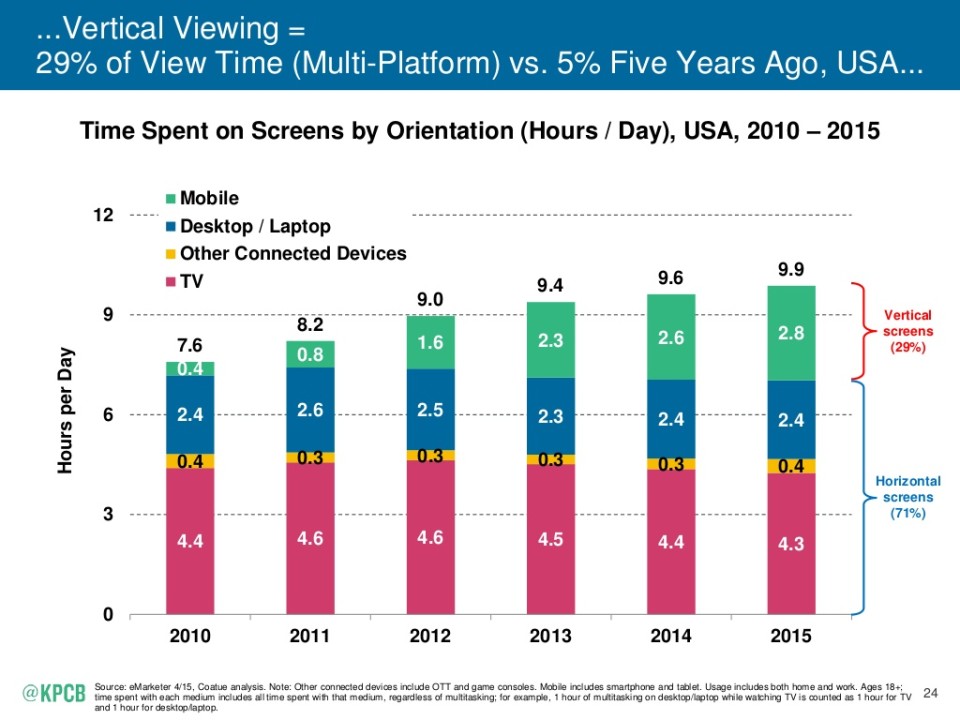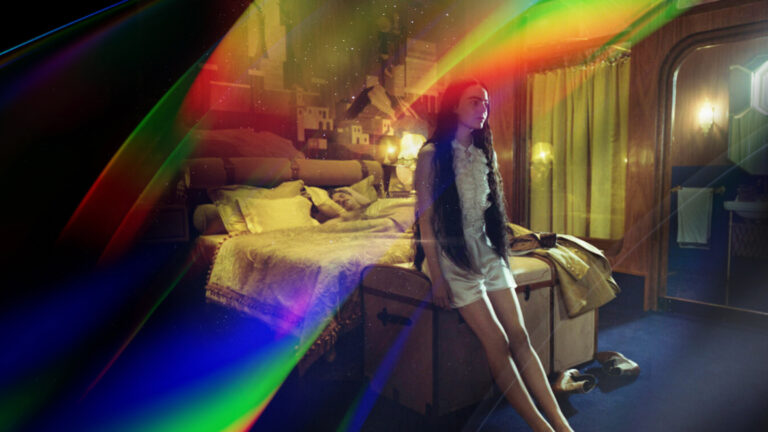If there is one takeaway from Internet video in 2015, it might be this: vertical video is here to stay.
Services like Vine, Snapchat, and Periscope continue to dominate headlines, finding new ways to bring dynamic video content to consumers all over the world. Not only are their delivery methods new—six-second video loops on Vine, self-destructing video messages on Snapchat, personal live streams on Periscope—but they are also delivering content that is unlike anything that has been made before. It’s a brave new world for content creators. And that world is increasingly dominated by vertical video.
Even so, the Internet is awash with umbrage toward vertical video. For those new to the debate, vertical video is content that is lined up like a smartphone (tall and skinny) instead of like a television or computer monitor (low and wide). Consumers are receptive to vertical content, but if you’re a filmmaker, there’s a good chance that you hate it. For many, vertical video is viewed as a mistake; its creators are lazy or stupid.
Yet vertical video keeps trending up. And it’s not just amateurs posting their home videos to YouTube, or sharing Vine loops with their friends. Major corporations and professional content creators are investing in vertical video. Their goal is to cater to the constantly growing mobile market.
Vertical video is more successful reaching mobile audiences.
New statistics show that vertical video is reaching more viewers and customers than traditional, horizontally framed video, at least among mobile users. According to data in the KPCB Internet Trends 2015 Report, mobile viewers are nine times more likely to watch vertical video ads—like sponsored content on Snapchat—than landscape ads. The New York Times’ Farhad Manjoo says the trend “shows off the way that opinions of tech elites can be rendered moot by mainstream preferences.”
Why have mainstream preferences changed? The way we view media has changed. Americans spend roughly 30% of their media viewing time on vertical screens, most of it on their smartphones. And we prefer vertical content on vertical screens.

At this point, marketers and video creators who aren’t working with vertical video are leaving money on the table. As mobile content grows, traditional advertising channels are diminishing. Why would anyone say no to vertical video?
Maybe part of the problem stems from the way we talk about video content, using “cinematic” as a synonym for “good.” But effective mobile video isn’t necessarily cinematic in the traditional sense. It is largely faces and close-ups of objects, more similar to portrait photography than cinema. Faces and bodies are vertical. When done well, vertical video can provide the intimacy and informality of a video call. It won’t be long before we see narrative-style advertising like Buzzfeed’s popular sponsored content go vertical.
Is vertical video for filmmakers, too?
That’s fine for ads, you might say, but what about filmmaking? It’s true that movies and TV seem drawn to widescreen formats. Some filmmakers have even stated that they don’t want people watching their movies on an iPhone. David Lynch said, “It’s such a sadness that you think you’ve seen a film on your f—ing telephone. Get real.” But people want to watch movies and TV shows on their phones. Why not make something just for them?
There is a world of possibilities in narrative vertical video. Found footage horror films are regularly among the most profitable independent films. The relaxed realism of mumblecore films has found its way into mainstream movies and TV (Netflix’s Master of None as one recent example). I would argue that these genres could migrate to vertical video without losing their power. They might even improve with the added intimacy of a viewer literally holding the story in their hand.
It’s time to stop trying to shoehorn the cinema into mobile content. Instead, let’s look to the content that is pulling people away from their televisions and into their phones. The next wave of amazing narrative content can be as in-your-face as a Vine loop, as silly and immediate as a Snapchat, and as personal as a Periscope broadcast. We could discover a whole new visual grammar and unlock deeper potential in our storytelling.
It’s time to say yes to vertical video.
Have you used vertical video in your own work? How did the experience differ from traditional video production? We’d love to see your work and hear your tips in the comments.




